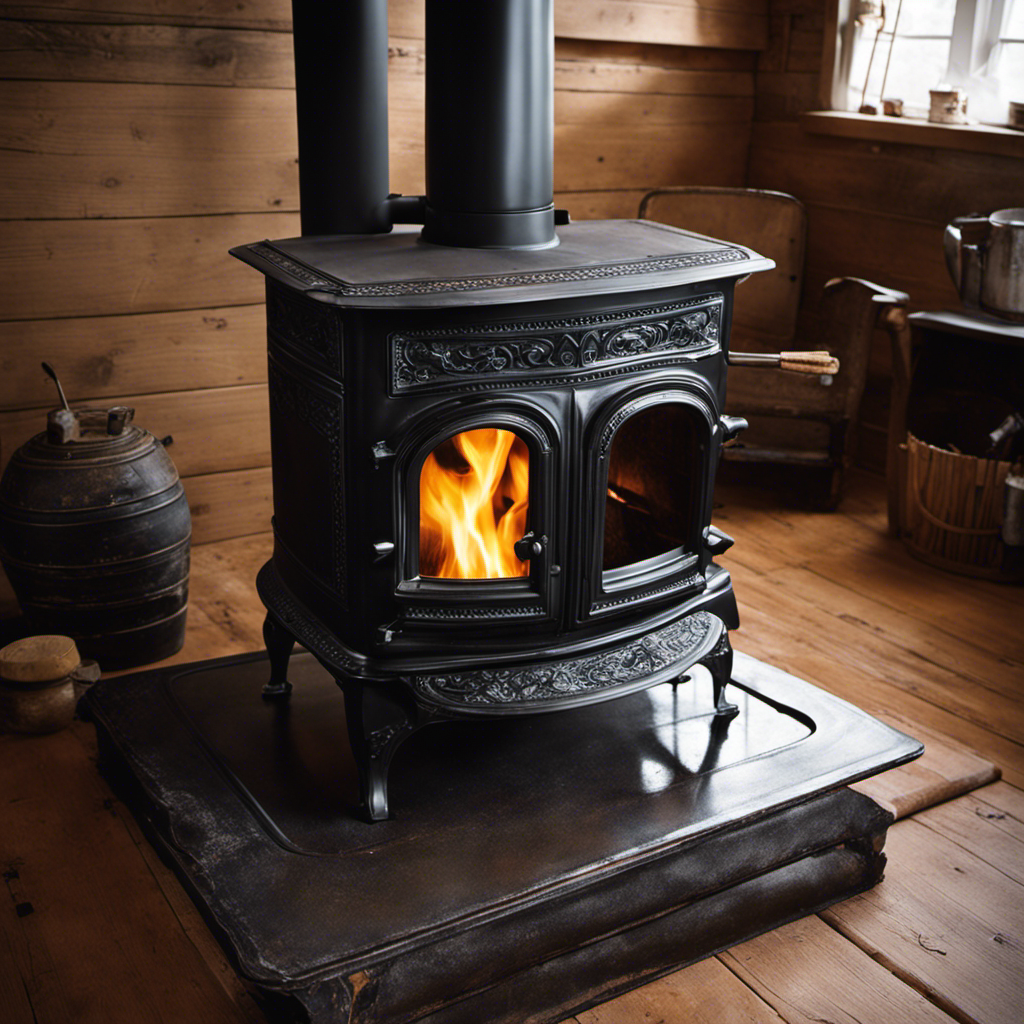You may be wondering, ‘What exactly is a non-catalytic wood stove?’
Well, let me break it down for you.
Non catalytic wood stoves are a type of wood-burning appliance that rely on combustion reactions to generate heat, without the use of a catalytic converter.
In this article, we’ll delve into the science behind these stoves, how they work, their advantages, factors to consider when choosing one, and maintenance tips.
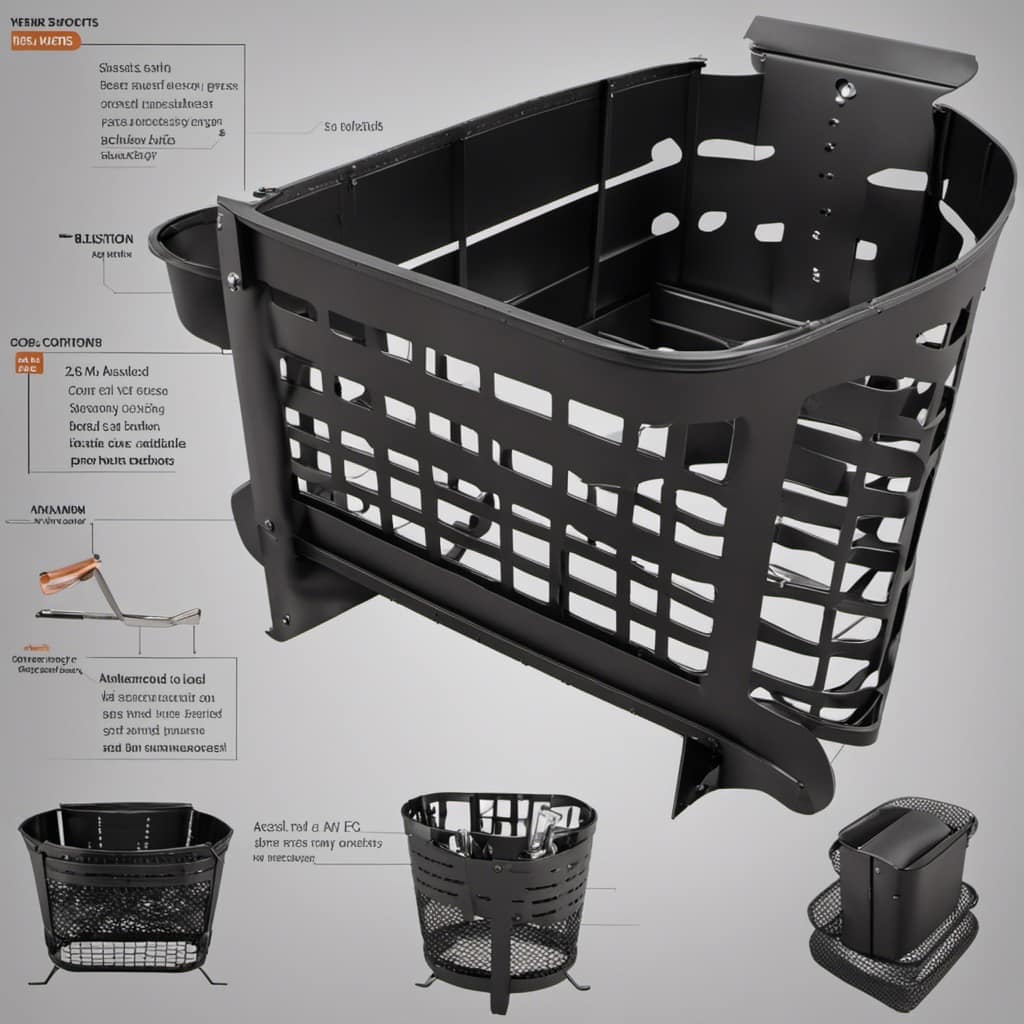
So, let’s get started and demystify non catalytic wood stoves!
Key Takeaways
- Non-catalytic wood stoves do not rely on a catalytic converter.
- They use a primary and secondary air supply to facilitate combustion.
- Non-catalytic wood stoves have higher efficiency and lower emissions compared to catalytic wood stoves.
- Regular maintenance is important for optimal performance of non-catalytic wood stoves.
The Science Behind Non Catalytic Wood Stoves
I’m fascinated by the science behind non-catalytic wood stoves. These innovative heating appliances utilize a unique combustion process to maximize efficiency and reduce emissions.
Unlike catalytic wood stoves that rely on a catalyst to initiate the combustion process, non-catalytic stoves utilize a primary and secondary air supply to facilitate the burning of wood. The primary air enters the firebox through adjustable vents, providing oxygen to ignite the wood.
As the wood burns, gases and smoke are released, which then mix with the secondary air supply. This secondary air, introduced through carefully engineered channels, helps to complete the combustion process, resulting in a more efficient and cleaner burn.
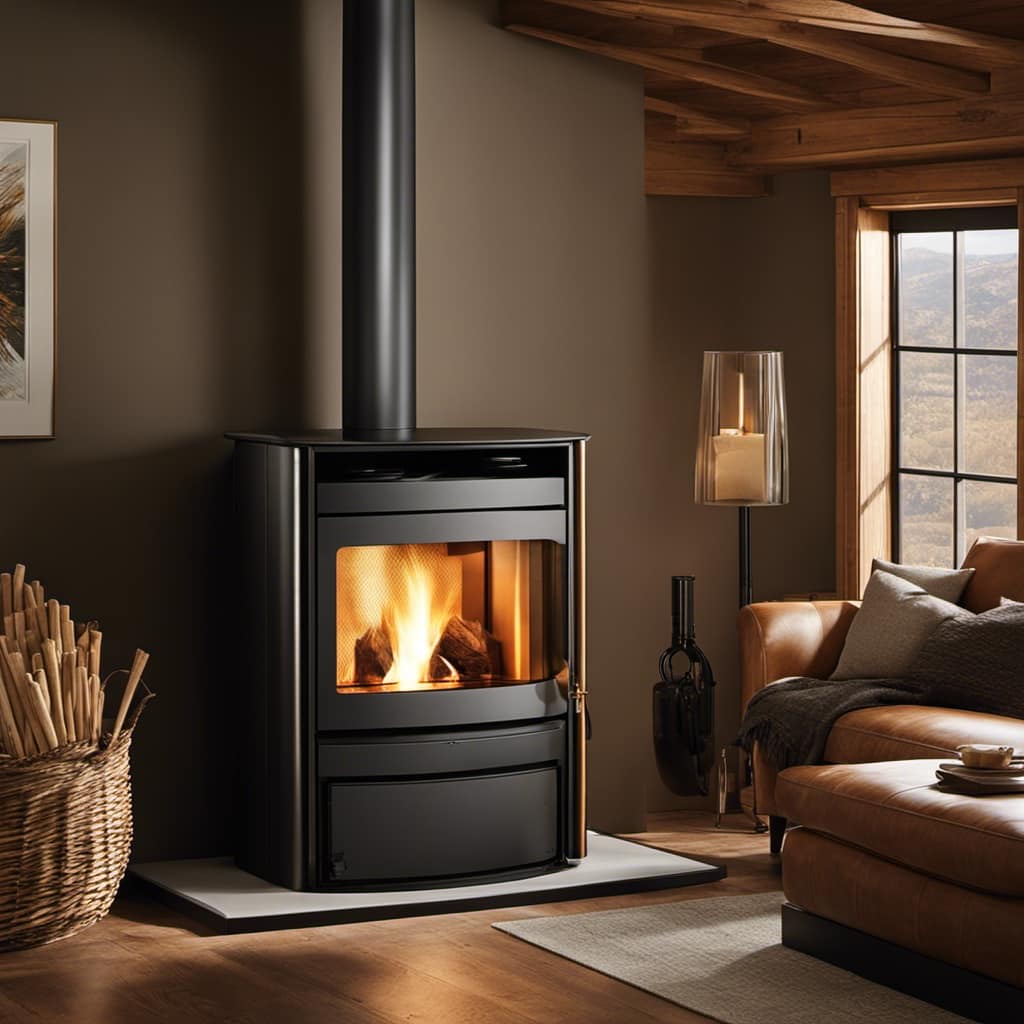
How Non Catalytic Wood Stoves Work
I find it fascinating how non-catalytic wood stoves work by utilizing a primary and secondary air supply to facilitate the combustion process and reduce emissions. Non-catalytic wood stoves are designed to burn wood more efficiently by using a two-step process. In the primary combustion chamber, fresh air is introduced to ignite the wood and create a hot fire. The secondary air supply, on the other hand, is introduced above the fire to burn off any remaining gases and particles, resulting in cleaner emissions.
To further emphasize the efficiency and environmental impact of non-catalytic wood stoves, let’s compare them to catalytic wood stoves and other heating options in the following table:
| Non-Catalytic Wood Stoves | Catalytic Wood Stoves | Other Heating Options | |
|---|---|---|---|
| Efficiency | High | Moderate to High | Varies |
| Emissions | Low | Low to Moderate | Varies |
| Fuel Availability | Widely available | Widely available | Varies |
| Cost | Affordable | Moderate to Expensive | Varies |
As you can see, non-catalytic wood stoves offer high efficiency and low emissions compared to catalytic wood stoves and other heating options. Additionally, they are more cost-effective and have readily available fuel sources. Overall, non-catalytic wood stoves provide an efficient and environmentally-friendly heating solution for many households.
Advantages of Non Catalytic Wood Stoves
One advantage of non-catalytic wood stoves is that they require less maintenance and are easier to clean, while still providing efficient and clean heating. Non-catalytic wood stoves use a secondary combustion system to burn off the smoke and gases produced during combustion, resulting in higher heat output and better efficiency.
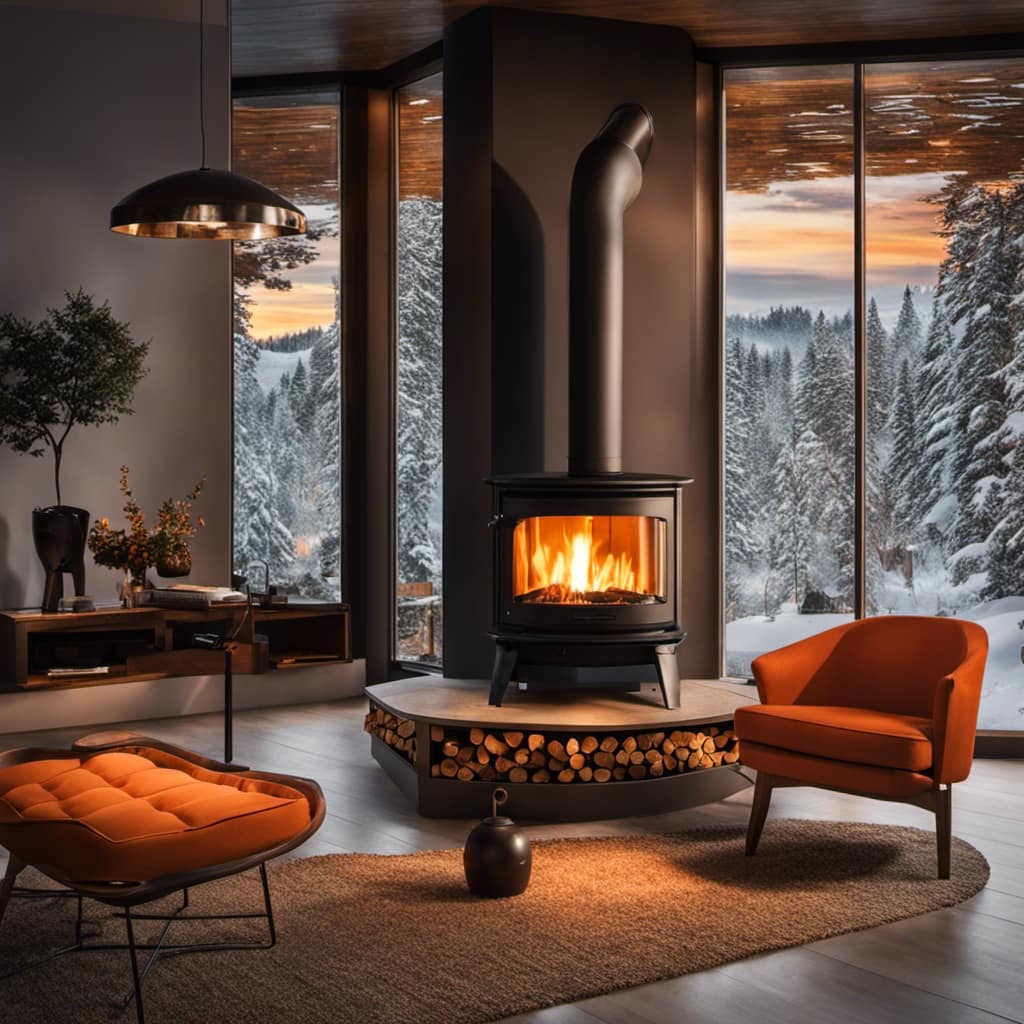
This means that you can enjoy a cozy and warm home without constantly worrying about cleaning and maintaining your stove. Additionally, non-catalytic wood stoves are cost efficient and environmentally friendly. They burn wood more efficiently, reducing the amount of fuel needed and saving you money on heating costs.
Furthermore, they produce fewer emissions and pollutants, making them a greener choice for the environment. Overall, non-catalytic wood stoves offer a convenient and eco-friendly solution for cost-effective heating.
Factors to Consider When Choosing a Non Catalytic Wood Stove
What are the most important factors to consider when choosing a non-catalytic wood stove, and how do they impact its performance and efficiency? When selecting a non-catalytic wood stove, there are several key factors that can greatly impact its performance and efficiency. One of the most important considerations is the stove’s efficiency rating. This rating is a measure of how effectively the stove converts wood into heat. Higher efficiency ratings indicate that the stove can generate more heat while using less wood, resulting in lower fuel costs and reduced environmental impact. Another factor to consider is the stove’s design and construction. A well-designed stove will have features such as airtight doors, adjustable air controls, and insulation, which help to maximize heat output and minimize heat loss. Additionally, the size of the stove and the size of the firebox can also impact its performance. A larger firebox allows for longer burn times and a higher heat output. To illustrate the importance of these factors, here is a table summarizing the impact of each factor on the stove’s performance and efficiency:
| Factor | Impact |
|---|---|
| Efficiency rating | Higher rating indicates better heat conversion and lower fuel consumption |
| Design and construction | Well-designed stoves maximize heat output and minimize heat loss |
| Size of stove | Larger stoves offer longer burn times and higher heat output |
| Size of firebox | Larger fireboxes allow for larger wood logs and longer burn times |
Considering these factors when choosing a non-catalytic wood stove will ensure that you select a stove that is both efficient and environmentally friendly.
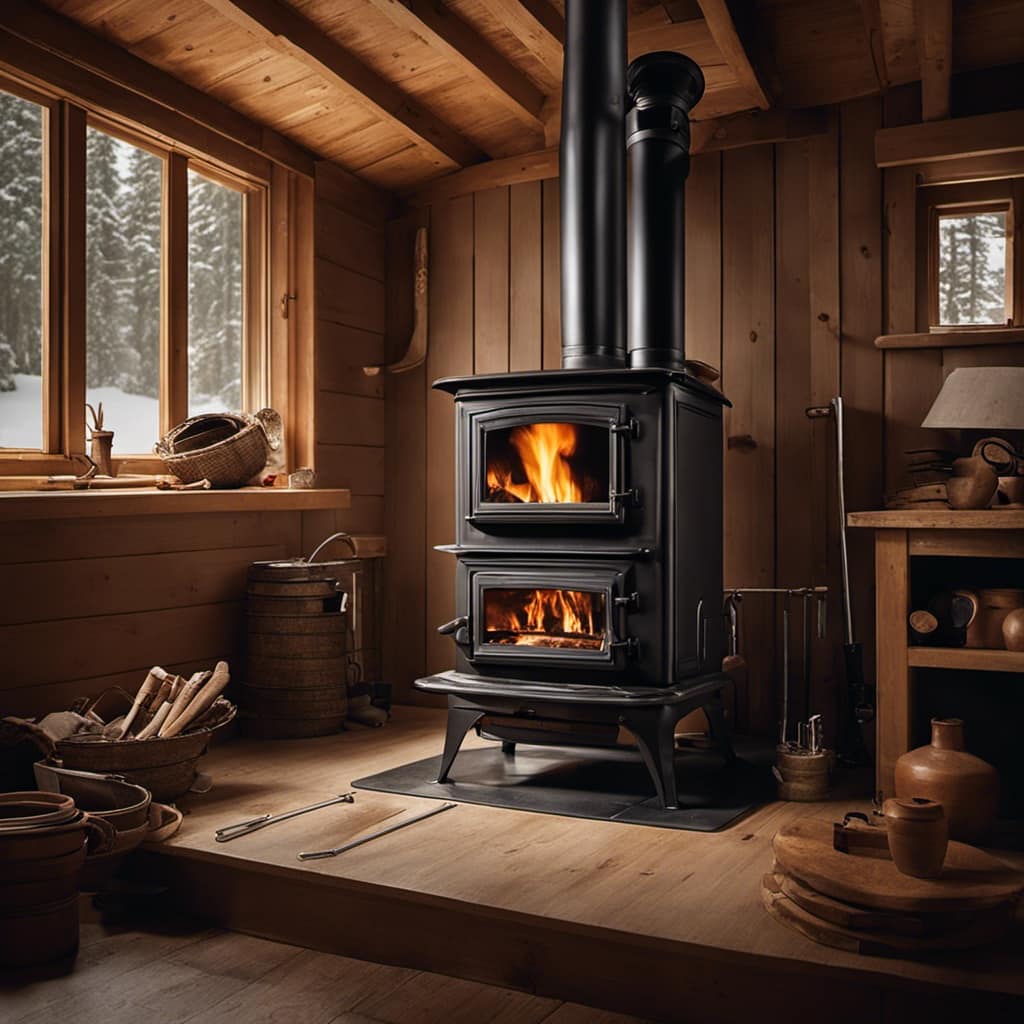
Maintenance Tips for Non Catalytic Wood Stoves
There are several important maintenance tips for non-catalytic wood stoves. Regularly cleaning the stovepipe and inspecting the door gasket for any signs of wear are essential tasks. Cleaning techniques play a vital role in ensuring the optimal performance of your wood stove. It’s recommended to clean the stovepipe at least once a year to remove any built-up creosote, which can cause chimney fires.
Additionally, regularly inspecting the door gasket for wear and tear is crucial to maintain a tight seal and prevent any air leakage. Troubleshooting common issues, such as a weak fire or difficulty in starting the stove, can often be resolved by checking for a clean exhaust system or adjusting the air intake.
Frequently Asked Questions
Are Non Catalytic Wood Stoves More Efficient Than Catalytic Wood Stoves?
Non catalytic wood stoves are more efficient than catalytic wood stoves, as they don’t rely on a catalytic converter to burn off pollutants. This means better indoor air quality. One disadvantage is that non catalytic stoves may require more frequent maintenance.
Can a Non Catalytic Wood Stove Be Used as the Primary Heat Source for a Home?
As the primary heat source for my off-grid cabin, I rely on a non-catalytic wood stove. It efficiently heats the small space, providing a cozy and cost-effective solution. The benefits are undeniable.
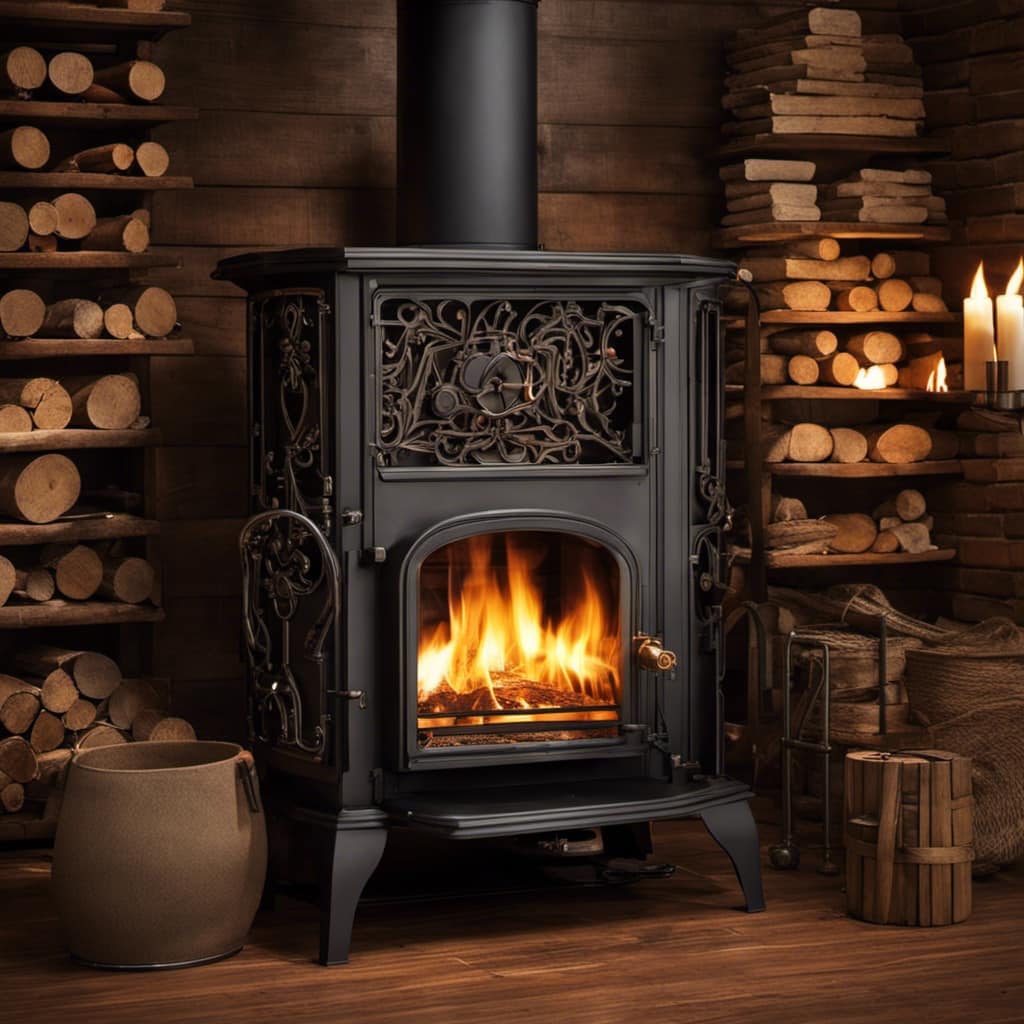
Are Non Catalytic Wood Stoves More Environmentally Friendly Than Catalytic Wood Stoves?
Non catalytic wood stoves are more environmentally friendly than catalytic wood stoves. They can reduce indoor air pollution and are cost effective. Their design allows for efficient burning of wood without the need for a catalyst.
What Types of Wood Are Recommended for Use in a Non Catalytic Wood Stove?
I recommend using hardwoods like oak, maple, and hickory in a non-catalytic wood stove. These types of wood burn efficiently and produce less smoke and emissions, making them environmentally friendly. Plus, non-catalytic wood stoves require less maintenance than catalytic ones.
Are There Any Safety Concerns or Precautions to Consider When Using a Non Catalytic Wood Stove?
When using a non-catalytic wood stove, it’s crucial to prioritize safety concerns and take necessary precautions. Efficiency comparison, recommended wood types, and the stove’s role as a primary heat source should also be considered. Additionally, its environmental friendliness is worth noting.
Conclusion
In conclusion, non catalytic wood stoves offer a more efficient and environmentally friendly option for heating homes. With their innovative design, these stoves utilize the principles of combustion to provide a reliable and consistent source of heat.
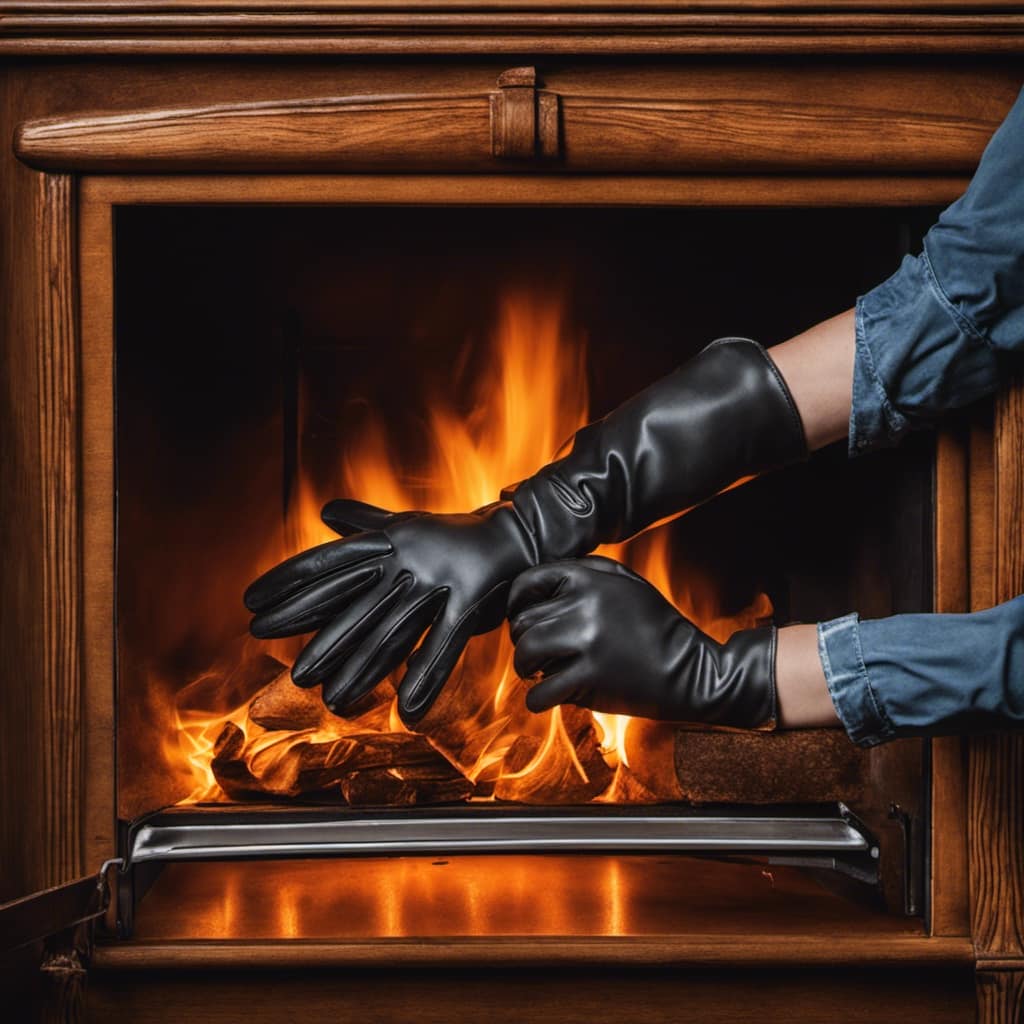
The advantages of non catalytic wood stoves, such as lower emissions and reduced maintenance, make them a popular choice among homeowners. When considering a non catalytic wood stove, it’s important to take factors such as size, installation requirements, and budget into account.
Ultimately, these stoves provide a visually appealing and practical solution for heating your home.
Growing up surrounded by the vast beauty of nature, Sierra was always drawn to the call of the wild. While others sought the comfort of the familiar, she ventured out, embracing the unpredictable and finding stories in the heartbeat of nature.
At the epicenter of every remarkable venture lies a dynamic team—a fusion of diverse talents, visions, and passions. The essence of Best Small Wood Stoves is crafted and refined by such a trio: Sierra, Logan, and Terra. Their collective expertise has transformed the platform into a leading authority on small wood stoves, radiating warmth and knowledge in equal measure.







